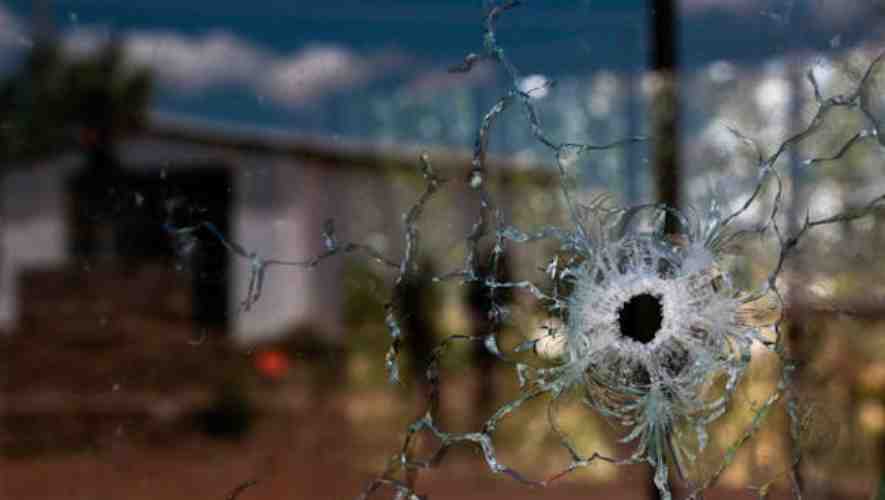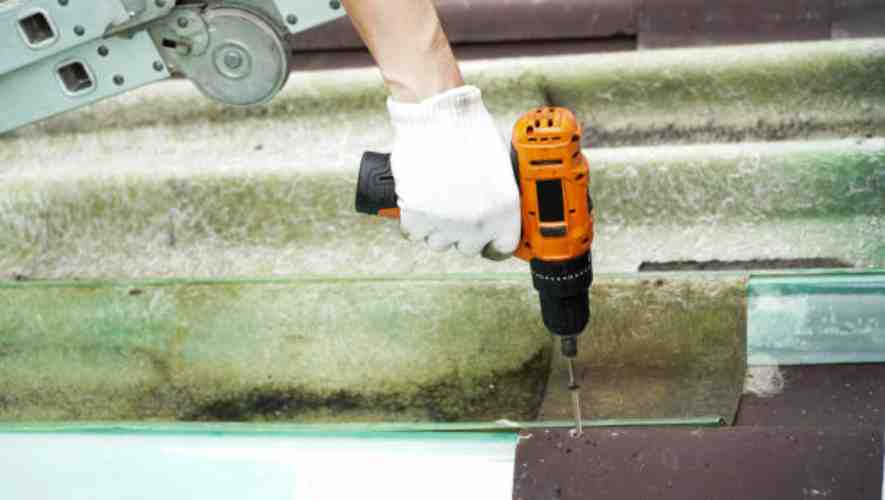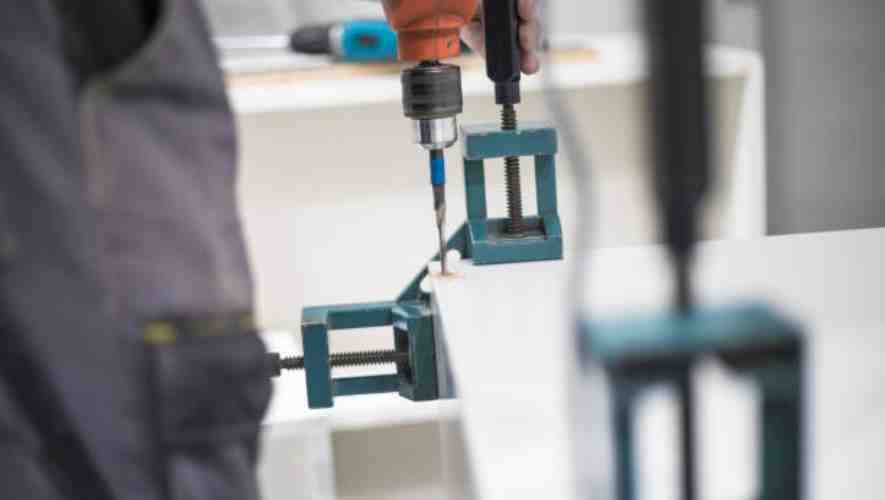Drilling into fiberglass can often be a daunting task, primarily due to the high risk of cracking this otherwise sturdy material. Whether you’re working on a boat, a vehicle, or any other fiberglass structure, the need for precision and care is paramount. This necessity arises from the delicate nature of fiberglass, which, despite its strength and versatility, can easily splinter or crack under improper handling.
How To Drill Fiberglass Without Cracking? To successfully drill into fiberglass without causing damage, it’s essential to use the right tools and techniques. Drilling requires a specific type of drill bit, a steady hand, and a clear understanding of the material’s properties. By following proper methods, you can achieve clean, crack-free holes in fiberglass, ensuring the integrity and appearance of your project.
The key to success lies in understanding the unique challenges posed by fiberglass and how to overcome them. This blog will guide you through the necessary steps and precautions to drill into fiberglass effectively. You’ll learn about the right tools, techniques, and tips to achieve perfect results without the risk of cracking. This knowledge will not only enhance your DIY skills but also save you time and resources in the long run.
Understanding the Causes of Cracking in Fiberglass

Drilling into fiberglass presents unique challenges that can lead to cracking if not executed properly. The process of drilling creates significant friction and heat, which can weaken the resin matrix and disrupt the fiberglass fibers.
Inappropriate drill bit selection or improper drilling techniques can introduce micro-fractures. These micro-fractures can propagate under stress, leading to larger cracks. Therefore, understanding the interaction between the drill bit and fiberglass material is key to maintaining the integrity of the fiberglass during and after drilling.
The integrity of fiberglass during drilling is heavily influenced by factors such as drilling speed, applied pressure, and the type of drill bit used. High drilling speeds can generate excessive heat, causing thermal damage to the fiberglass
Conversely, slow speeds may lead to uneven pressure distribution, increasing the risk of cracking. The choice of drill bit is also critical; bits not designed for fiberglass can cause splintering and cracking. The pressure applied during drilling must be carefully controlled to avoid overstressing the material. A balanced combination of these factors is essential for maintaining the structural integrity of fiberglass during drilling
There have been several studies and documented cases that highlight the challenges of drilling in fiberglass without causing damage. Research often focuses on the relationship between drilling parameters and crack formation.
Case studies in industries like boat manufacturing and wind turbine construction have shown the real-world implications of improper drilling practices. These studies have led to the development of improved drilling techniques and specialized tools designed to minimize the risk of cracking in fiberglass, underscoring the importance of ongoing research and innovation in this area.
Preparation Steps Before Drilling Fiberglass

Selection of Appropriate Tools and Drill Bits
The first step in drilling fiberglass involves choosing the right tools and drill bits. Fiberglass, a composite material known for its durability and strength, requires specific drill bits designed for precision and minimal splintering.
Carbide or diamond-tipped drill bits are ideal, as they remain sharp and effective through the drilling process.. Using a power drill with adjustable speed settings helps in controlling the drilling pace, which is crucial for preventing damage to the fiberglass.
Pre-Drilling Preparations: Cleaning and Marking the Drill Site
Before drilling, it’s essential to prepare the drill site meticulously. This involves cleaning the fiberglass surface to remove any dirt or debris that could interfere with the drilling process. Using a mild detergent and a soft cloth is recommended for this purpose.
Once the surface is clean, marking the exact drilling spot is crucial. Using a non-permanent marker or a piece of tape, clearly indicate where the hole will be drilled. This precision ensures accuracy and reduces the risk of errors during drilling.
Importance of Stabilizing the Fiberglass Piece to Prevent Movement
Stabilizing the fiberglass piece is a critical step in the drilling process. Movement during drilling can lead to inaccuracies, damage, or even injury. Secure the fiberglass using clamps or a vice, ensuring it’s held firmly in place.
This stability not only prevents the material from moving but also allows for more controlled and precise drilling. It’s important to use soft jaws or padding in the clamps to avoid scratching or damaging the fiberglass surface.
Drilling Techniques and Best Practices

Step-by-Step Guide to Drilling Fiberglass
Drilling into fiberglass requires precision and care to avoid damage. The first step is selecting the right drill bit; a high-speed steel (HSS) bit or a diamond-tipped bit is ideal. Begin by marking your drilling point with a small indentation to guide the drill bit. It’s crucial to drill slowly to prevent splintering, applying minimal pressure. Finally, regularly withdraw the bit to remove debris, ensuring a clean and precise hole.
Techniques to Reduce Friction and Heat Buildup
Minimizing friction and heat is vital when drilling into materials like fiberglass. Using a lubricant, such as cutting oil or a water-based coolant, can significantly reduce heat. It’s also beneficial to choose drill bits with a coating, like titanium nitride, which can lessen friction. Implementing intermittent drilling – drilling for a few seconds and then pausing – allows the bit and material to cool down, further preventing heat buildup.
The Role of Drill Speed and Pressure Management in Preventing Cracks
Managing drill speed and pressure is essential in preventing cracks in fiberglass. A variable speed drill is recommended, as it allows for gradual speed increase, minimizing the risk of cracking. Start at a low RPM and gradually increase as the hole deepens. Consistent, light pressure is key; heavy pressure can cause the fiberglass to crack. Monitoring and adjusting both speed and pressure during the drilling process is crucial for maintaining the integrity of the material.
Post-Drilling Procedures and Crack Prevention

Inspecting the Drilled Hole for Quality and Precision
After completing the drilling process, it is crucial to inspect the drilled hole for quality and precision. This involves checking the hole for the correct diameter, depth, and alignment as per the specifications. It’s also important to look for any deviations or irregularities that may affect the integrity of the material. Using tools like calipers or micrometers can provide accurate measurements, ensuring that the drilling process meets the required standards and the hole’s purpose.
Techniques for Smoothing and Finishing the Edges of the Hole
Once the hole is drilled, smoothing and finishing the edges is essential to prevent any future cracks or material fatigue. Techniques such as deburring, which involves removing small imperfections and rough edges, are commonly used. This can be done manually with a deburring tool or through mechanical means like sanding or grinding. A well-finished hole not only enhances the appearance but also increases the structural integrity of the material, reducing the likelihood of stress points that could lead to cracks.
Tips for Repairing Minor Cracks that May Occur During Drilling
Despite taking precautions, minor cracks might still occur during the drilling process. To address this, it’s important to act quickly to prevent the cracks from spreading. Using suitable fillers or adhesives that are compatible with the material can effectively repair these cracks. In cases where the material is critical to structural integrity, consulting a professional for the best repair method is advisable. Regular maintenance and inspection can also help in identifying and addressing such issues before they escalate.
Conclusion
Drilling into fiberglass without cracking it is a skill that combines the right tools with careful technique. By following the steps outlined in this blog, you can achieve clean, precise holes in your fiberglass projects without any damage.
In conclusion, remember that patience and precision are your best allies in this task. Don’t rush the process; take your time to measure, mark, and drill carefully. Feel free to experiment with different drill bits and speeds on scrap pieces before attempting your actual project. This hands-on experience will give you a better feel for the material and the process. Ultimately, your efforts will pay off in the form of flawless, crack-free results, enhancing both the functionality and aesthetics of your fiberglass projects. Remember, with the right approach, even the most challenging tasks can be mastered, and drilling into fiberglass is no exception

